The following invasive non-native species management toolkits were developed through the RAPID LIFE project to support training and biosecurity:
RAPID INNS Management Toolkit: Freshwater Biosecurity Resources
What is Biosecurity?
Biosecurity is about reducing the risk of introducing or spreading invasive non-native species (and other harmful organisms such as diseases) in the wild.
This section provides resources on biosecurity including guidance and presentations on biosecurity measures in the freshwater environment. RAPID LIFE resources are freely available to be used for training and development of biosecurity actions.
Freshwater Biosecurity Guidance Documents
Freshwater Biosecurity Training Presentations
For Freshwater Asset Managers:
- Freshwater Event Managers (Powerpoint presentation)
- Freshwater Marina and Boat Club Managers (Powerpoint presentation)
- Freshwater Volunteers (Powerpoint presentation)
For Freshwater User Groups:
- Generic biosecurity presentation for freshwater user groups (ZIP file) including auxiliary slides for freshwater anglers, freshwater boaters, and canoeists and kayakers (Powerpoint presentations)
Biosecurity Videos
- Creating a Marina Biosecurity Plan Guide (video, external link)
- Powerboat Check, Clean, Dry Video (video, external link)
- Dinghy Check, Clean, Dry Video (video, external link)
- Windsurfer Check, Clean, Dry Video (video, external link)
- Personal Watercraft Check, Clean, Dry Video (video, external link)
- Narrowboat Check, Clean, Dry Video (video, external link)
Check, Clean, Dry Materials
Check, Clean, Dry is a national campaign which focuses on stopping the spread of invasive plants and animals in our waters. Find useful materials for different activities here:
Leaflets
Posters
Useful Links
- NBN Atlas (external link): maps of distribution of INNS
- JNCC advice on INNS (external link)
- JNCC advice on river management (external link), includes legislation
- The Rivers Trust (external link)
- Canal & River Trust (external link)
- Freshwater Habitats (external link)
- The River Restoration Centre (external link)
- The Angling Trust (external link), advice on INNS
- Royal Yachting Association (external link), advice on INNS
- The Green Blue (external link)
RAPID INNS Management Toolkit: Marine Biosecurity Resources
What is biosecurity?
This section provides guidance on biosecurity including documents and presentations on biosecurity measures in the marine environment. All the RAPID LIFE resources are freely available to be used for training and development of biosecurity actions.
Marine Biosecurity Guidance Documents
- Marine Best Practice by Sector (PDF)
- Examples of Marine INNS (PDF)
- How to Write a Marine Biosecurity Plan - Large Scale (PDF)
- How to Write a Marine Biosecurity Plan - Small Scale (PDF)
- Impacts of INNS on Marine Sector (PDF)
- Marine Biosecurity Case Studies (PDF)
- Marine Engineering Biosecurity Solutions (PDF)
- Marine Biosecurity for Construction and Events (PDF)
- Biosecurity Examples from Other Sectors (PDF)
- Marine INNS Control Measures (PDF)
- Hull Fouling Guidance (PDF)
- Marine Related Legislation (PDF)
Marine Biosecurity Presentations
For Water Asset Managers:
- Event Managers (Powerpoint presentation)
- Marinas and Large Yacht Clubs (Powerpoint presentation)
- Mariculture (Powerpoint presentation)
- Volunteers and Mooring Associations (Powerpoint presentation)
-
Commercial Ports and Harbours (Powerpoint presentation) Auxiliary slides (Powerpoint presentation) Missing.
For User Groups:
- Generic biosecurity presentation for marine user groups (ZIP file) including auxiliary slides for canoeists and kayakers, marine anglers, and marine boaters (Powerpoint presentations)
Biosecurity Videos
Check, Clean, Dry Materials
Check, Clean, Dry is a campaign which focuses on stopping the spread of invasive plants and animals in our waters. Find useful materials for different activities here:
Leaflets
Posters
Useful Links
RAPID INNS Management Toolkit: Priority species
ID and Contingency Planning Training Toolkit
Some invasive non-native species are considered priority species to watch out for. This is because these species are considered:
- Highly likely to invade the UK or, if they are already present, highly likely to spread.
- Highly likely to cause significant damage to native wildlife and/or the economy.
On this webpage you will find materials available that give information about the identification of these species, as well as on the contingency response process to report these species. These materials are freely available to download and use for training.
Amphibians and Birds
Plants
RAPID INNS Management Toolkit: Good Practice Management
Good Practice Management
Good Practice Management Guidance
- American mink (PDF)
- American skunk cabbage (PDF)
- Carpet sea squirt (PDF)
- Curly waterweed (PDF)
- Floating pennywort (PDF)
- Giant hogweed (PDF)
- Himalayan balsam (PDF)
- Japanese knotweed (PDF)
- New Zealand pygmyweed (PDF)
- Pacific oyster (PDF)
- Parrot's feather (PDF)
- Piri-piri bur (PDF)
- Slipper limpet (PDF)
- Terrapin (PDF)
- Water primrose (PDF)
- Zebra mussel (PDF)

